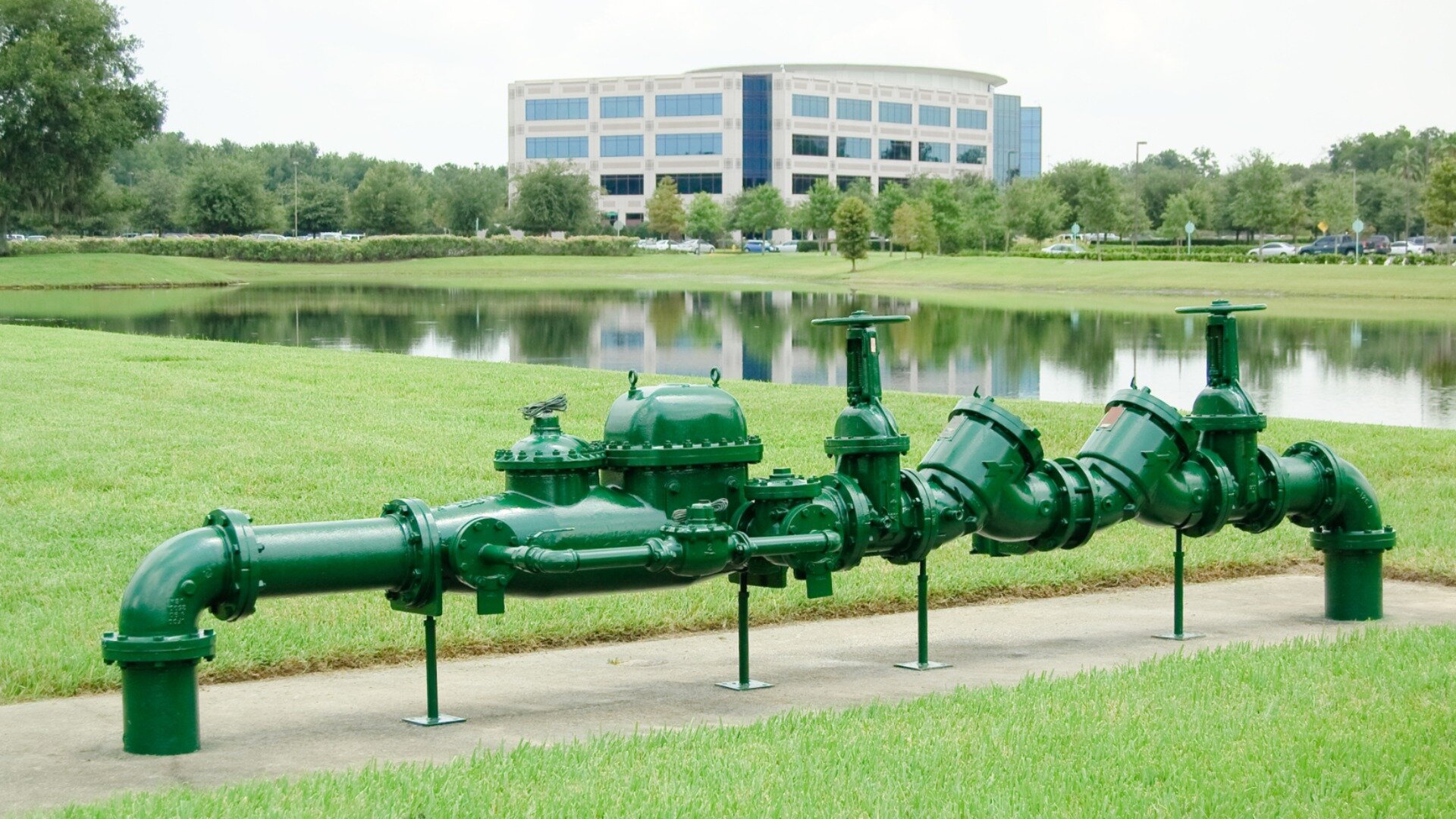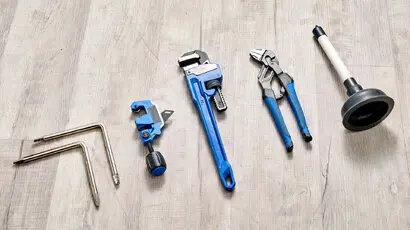Keeping water safe and pure in commercial plumbing is crucial, thanks to backflow prevention. Within a business environment, where the stakes are higher, it becomes essential to ensure that drinking water stays free from contamination. Backflow, which is basically water flowing in reverse, can bring health risks and potential legal troubles for businesses.
![]()
In this post, we’ll dive into why backflow prevention is vital for commercial plumbing. We’ll look at the risks involved with backflow and important steps businesses can take to protect public health, stick to regulations, and maintain a solid reputation.
What is Backflow?
Backflow is when water or other substances flow in the opposite direction within a plumbing system.In a well-designed plumbing system, water typically flows in a single direction from the main water supply system into various outlets and fixtures. However, certain circumstances can disrupt this normal flow, leading to backflow.
![]()
One common cause is a change in water pressure. Fluctuations in pressure can occur due to factors such as water main breaks, firefighting activities, or high demand in nearby areas. When the pressure within the plumbing system drops suddenly, it creates a pressure differential that allows water to reverse its path and flow backward.
Another cause of backflow is cross-connections. A cross-connection is a point where the potable water supply comes into contact with a non-potable source or a potentially contaminated substance.These connections can arise from improper plumbing system design or faulty and unprotected connections between potable and non-potable water sources. Backflow can pose serious risks to the quality and safety of the water supply, making backflow prevention crucial in commercial plumbing systems.
Importance of Backflow Prevention in Commercial Settings
Backflow prevention is vital in commercial spaces as it ensures public health, complies with regulations, and keeps business reputations intact. The main reason to focus on backflow prevention is to shield public health. Backflow can bring pollutants, chemicals, and bacteria into drinking water, risking the health of employees, customers, and the public. By using solid backflow prevention methods, businesses can cut down on the chance of contamination, guaranteeing safe water for everyone on their premises.
In addition, compliance with regulations is a crucial consideration in commercial settings. Many jurisdictions have specific plumbing codes and regulations that require commercial properties to have a backflow prevention device installed and regularly tested.
![]()
Failing to meet these requirements can result in legal consequences and penalties for businesses. By diligently implementing backflow prevention measures, commercial property owners demonstrate their commitment to adhering to plumbing codes and regulations, avoiding potential legal issues, and maintaining compliance with local authorities.
Furthermore, backflow prevention is instrumental in preserving the reputation of businesses.Customers and stakeholders expect commercial establishments to prioritise safety, health, and environmental responsibility.
Potential Risks of Backflow
Backflow poses significant risks that can have detrimental effects on both public health and regulatory compliance. One of the most critical risks associated with backflow is the contamination of potable water. When backflow occurs, it can introduce pollutants, chemicals, and harmful bacteria into the drinking water supply. These contaminants can originate from non-potable water sources, such as irrigation systems, industrial processes, or sewage systems. Consuming contaminated water can lead to severe health issues, ranging from gastrointestinal illnesses to more serious infections.
The health hazards resulting from backflow contamination are particularly alarming in commercial settings where a large number of people rely on the water supply. Employees, customers, and the general public can be exposed to contaminated water, leading to potential outbreaks of waterborne diseases. In addition to the immediate health risks, such incidents can have long-lasting consequences for the affected individuals and the business’s reputation.
![]()
Not only are the health risks substantial, but the failure to prevent backflow can also lead to legal and regulatory complications. Many jurisdictions have specific plumbing codes and regulations requiring backflow prevention measures in commercial properties. Failure to comply with these regulations can result in penalties, fines, and potential legal actions. In addition, businesses may face consequences such as temporary shutdowns, loss of operating licenses, or damage to their reputation due to non-compliance.
In light of these potential risks, it becomes evident that backflow prevention is critical in commercial plumbing systems. By implementing effective backflow prevention measures and utilising an appropriate backflow preventer, businesses can mitigate contamination risks, safeguard public health, and ensure compliance with regulatory requirements. Proactive measures in backflow prevention protect individuals’ well-being and contribute to maintaining a safe and reputable business environment.
Backflow Prevention Measures
To keep commercial plumbing systems safe and sound, putting in place effective backflow prevention measures is crucial. There are several steps businesses can take to reduce the risks of backflow incidents. An important step is installing backflow prevention devices.
Devices like reduced pressure zone (RPZ) valves, double-check valves, and air gaps are engineered to stop the backward flow of water and contaminants into safe drinking water. To work correctly, these backflow devices need professional installation following plumbing codes and laws.
![]()
Regular maintenance and testing of backflow prevention devices are equally important. Over time, these devices may experience wear and tear or develop faults, compromising their effectiveness. By conducting periodic inspections and backflow testing, businesses can identify any issues and promptly address them to maintain the integrity of their backflow prevention system.
Additionally, cross-connection control is a critical aspect of backflow prevention. Cross-connections occur when unprotected or improper connections exist between potable and non-potable water sources.
By implementing proper plumbing design and practices, businesses can minimise the risk of cross-connections and subsequent backflow incidents. This includes using backflow prevention devices at potential cross-connection points and separating potable and non-potable water systems.
Steps for Implementing Backflow Prevention in Commercial Plumbing Systems
Implementing backflow prevention measures in commercial plumbing systems requires a systematic approach. Here are six essential steps to guide businesses in the implementation process:
Conduct a Risk Assessment
Start by assessing the commercial plumbing system to identify potential sources of backflow and evaluate the level of risk. This assessment helps prioritise areas that require immediate attention and determine the appropriate backflow prevention measures to implement.
Engage Certified Professionals
Collaborate with licensed plumbers and backflow prevention specialists with the expertise and knowledge to install, test, and maintain backflow prevention devices. These professionals can guide businesses in selecting the most suitable devices for their specific needs and ensure compliance with plumbing codes and regulations.
![]()
Develop a Backflow Prevention Plan
Create a comprehensive plan that outlines the steps and strategies for implementing backflow prevention measures. This plan should include device selection, installation schedules, testing protocols, and record-keeping procedures. It provides a roadmap for businesses to follow and helps ensure consistency and effectiveness in backflow prevention efforts.
Install Backflow Prevention Devices
Work with certified professionals to install appropriate backflow prevention devices in strategic locations throughout the plumbing system. These devices, such as RPZ backflow valves or a double-check backflow valve, act as barriers to prevent the reverse flow of water and contaminants.
Implement Regular Testing and Maintenance
Schedule regular backflow prevention device testing and maintenance to ensure proper functioning. Certified professionals should conduct testing to verify that the devices are operating within acceptable limits. Regular maintenance helps identify any issues or malfunctions early on, allowing for prompt repairs or replacements.
Maintain Documentation and Records
Keep thorough documentation of all backflow prevention activities, including device installation, testing results, maintenance records, and compliance documentation. Maintaining accurate records demonstrates a commitment to backflow prevention and assists in demonstrating compliance with regulatory requirements.
Keep Your Business Flowing Safely
In conclusion, backflow prevention is critical in commercial plumbing to protect public health and safety, maintain compliance, and safeguard businesses’ reputations. At WP Plumbing, we specialise in implementing robust backflow prevention measures. Contact us today to ensure the safety and integrity of your commercial plumbing system.








